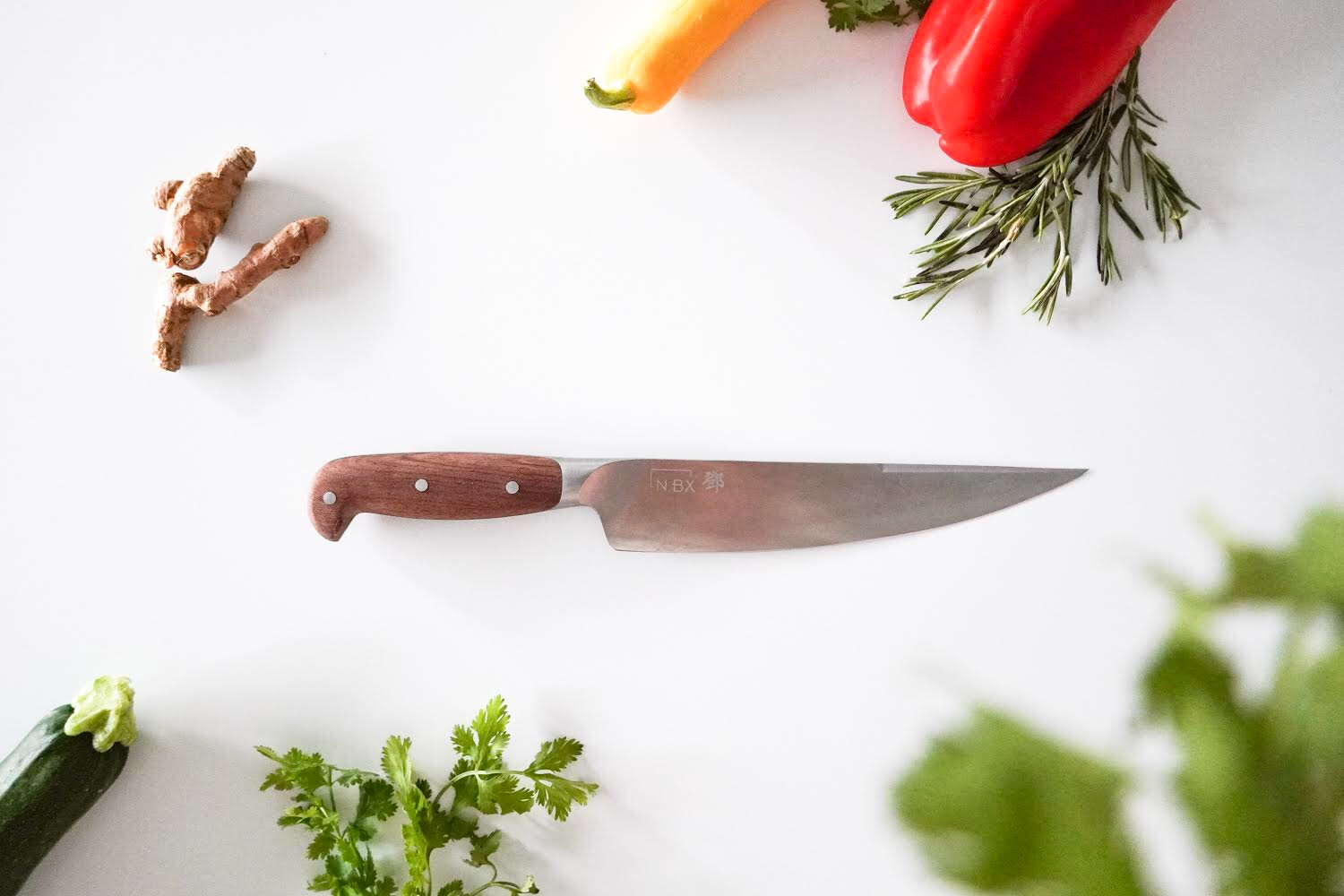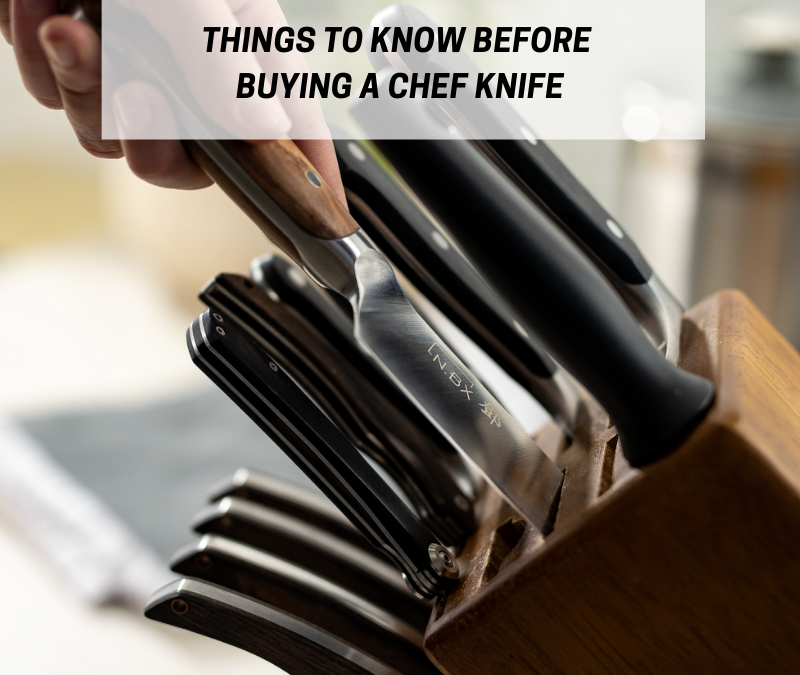If you’re looking for a chef knife, you already know that it’s the most useful kitchen knife you will add to your collection. The chef knife is an incredibly versatile piece of cutlery, used for chopping, slicing, and dicing. It’s designed to handle everything from bread to vegetables and meats. Whether you’re preparing sandwiches, chopping a salad, or slicing up some delicious ribs, a chef knife is always ready to do the work. When choosing a chef knife, though, the options can be overwhelming. What type of steel is better? Should I get a longer or a shorter knife? What is the difference between a single and double beveled blade? What material should the handle be made out of? What is the difference between a hidden and full tang? Don’t worry. We have answers.

What Do You Want Your Chef Knife To Do For You?
The best chef knives aren’t those with the hardest steel, the most natural handles, or a specific type of bevel. In fact, the most important thing you need to know before buying chef knives is how you plan to use your knife. If you need a piece of cutlery that’s going to serve long hours in the kitchen, you’ll want to consider the weight of the blade and the comfort of the handle. If you don’t have the time to constantly sharpen your blade, you’ll want to invest in a knife that retains its edge longer. In this case, a harder steel, such as forged steel, is more ideal. A knife made out of a softer steel will require more maintenance to keep a sharp edge. Learn how best to take care of your steel knife.
Key Differences Between The Best Chef Knives:
Blade Length
An 8-inch chef’s knife is a popular length for home cooks because it is versatile and easy to control. A chef knife that can transition to chopping, slicing, dicing, and carving is a huge value. One reason a cook may prefer a longer blade is it can cut more volume, but the longer the blade, the more knife skills may be required.
Types of Steel
You may have heard people refer to steel as “Japanese” or “German” grade. There are all sorts of steels varying in weight, durability, and hardness. Carbon steel and stainless steel are two of the most common types for kitchen knives. Both steels are excellent in resisting corrosion. The choice largely comes down to personal aesthetic, and price points. Some people prefer the pristine look of the stainless steel blade, while others like the weathered, patina’d look of the carbon blade.
One of the most common steels used for chef knives is 50CrMoV15 (50 for 0.50% carbon and 15 for 15% Chrome). It has a high resistance to corrosion and less likely to chip (if tempered correctly). This is optimal for everyday users and professionals, where the knife may be tossed around and used a lot.
Forged Metal
Hard metals are more prone to chipping, yet these are the metals that are easiest to care for. The way to make a metal hard AND durable is achieved through a forging process. Metals can be heated and cooled (or tempered) for the right periods of time. This results in a durable hard metal that is not as prone to chipping.
Bevel
You may also be wondering whether to buy a single or double-beveled blade. This indicates how the cutting edge of the blade has been honed. A double-beveled blade has been sharpened down on both sides of the steel, while a single-beveled blade is only sharpened on one side. Many chefs swear by a single-bevel knife, because they are great for quick dicing. But a single-beveled blade will always cut against the direction of the bevel. For right-handed chefs, the bevel should be on the right side, and vice versa for left-handed chefs. For a shared knife, a double bevel may come in handy.
Tang
Another thing to consider is the hidden or full tang. Either type of handle works perfectly for nearly any type of use, with the only exception being heavy chopping. The full tang is designed to increase the durability and longevity of the handle, and if you’re looking for a life-time value in a chef knife, it’s recommended.
Treat Your Chef Knife Right!
The best chef knives don’t need to cost $300, they just need to suit your needs. In the end, the most important thing to do is treat it well once it comes home to you. Good chef knives can serve you for decades as long as you maintain them and treat them with respect.
Looking to upgrade your collection? The Nobox chef knife is as user-friendly, rugged, and versatile as they come.


Recent Comments